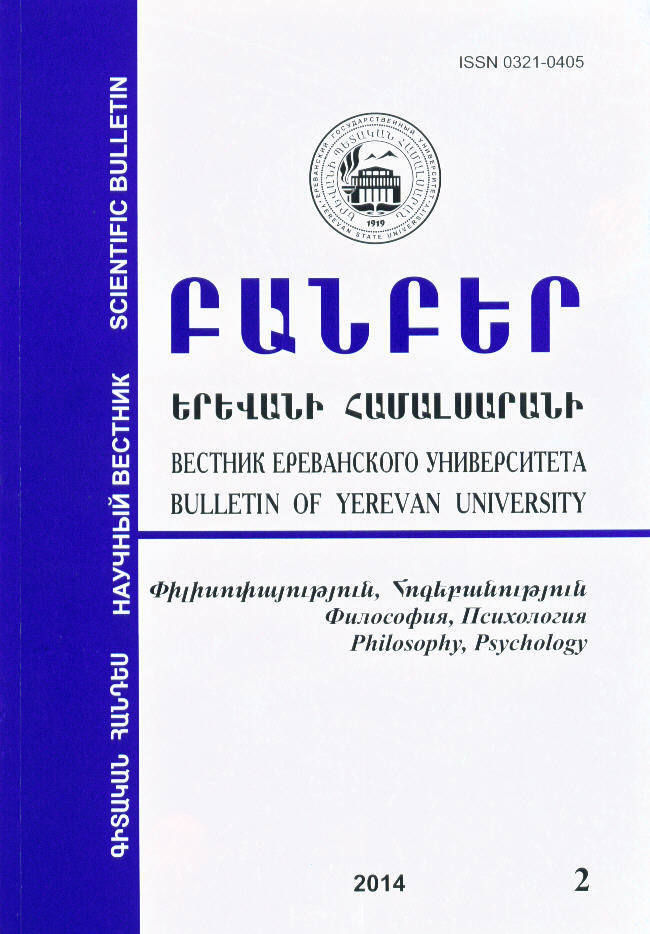About the Problem of mediation of reality by subjective patterns
DOI:
https://doi.org/10.46991/BYSU:E/2014.5.2.056Keywords:
subject-object relations, cognition range, recognition space, immediately cognition, mental image, qualia, respective, synchronizationAbstract
In some scientific paradigms had repeatedly taken steps to build multi-tier schemes for explaining the perception by knowing subject. In all these schemes always lacked one link through which psychologically was argued a direct contact with the knowing object, as it is not able to properly consider the objectivity of the knowing object. Rather, it is accepted only subject to their multilevel ordinary cognitive processes and functions. As a result, it’s find difficulty in defining the notions about object properties, psychic reality, the outer and inner world of man, the cognition boundaries between object and subject, etc. Offered an explanatory model of the cognitive act on sensory- perceptual- cognitive order, within which is examined the relationship between subject and object of knowledge as immediate appearance. The basic point of this concept is as follows: for understanding the laws and mechanisms of the cognitive act, to access the object of knowledge are psychologically (and logically) inappropriated to dismember the subjective reality on intermediates. Subject-object relationship should not include any intermediate carrying agent, because the argumentation that cognition is repeatedly mediated by various phenomenons outside the subject, as well as by products of previous cognitive processes are methodologically nonviable. In consequence of this view, the object of knowledge looks like gradually moved away from the observer. This article theoretically affirms the possibility of direct perception and comprehension of the objective reality by knowing subject, thanks to the system of separated cognitive functions. Due to this the world, as an information, is given to knower simultaneously (synchronously) over a range of cognitive system, respectively distributed among proper functions of the cognitive range.
Downloads
Published
How to Cite
Issue
Section
License
Copyright (c) 2021 Bulletin of Yerevan University

This work is licensed under a Creative Commons Attribution-NonCommercial 4.0 International License.

